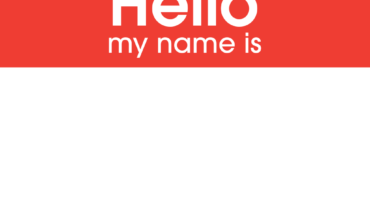Nonprofit World: Endowed Journalism
“As journalism declines, the influence and impact of nonprofit media will expand.”
Session Chair: John Bracken, Program Officer, MacArthur Foundation
With:
Jon Sawyer, Executive Director, Pulitzer Center on Crisis Reporting
Ellen Miller, Co-Founder & Executive Director, Sunlight Foundation
Intro: John Bracken. The term nonprofit is similar to blogs in that it encompasses so much and so many different things. How useful is it as a term? Three types of nonprofits that do journalism come to mind: one that is committed to journalism per se; NPR etc. Advocacy organizations– orgs. where journalism is not part of their mission statement, but increasingly it might become the case. NY Times article that used Human Rights Watch Report. Expand the definition of what we’re talking about with journalism. Helen talked about Brave New Film– brief, affective, opinionated films and turning them around very quickly. Third time that comes to mind is US. Citizen media, participatory media… we’re all involved. All an overlapping part of this We Media eco-system.
Ellen: The Sunlight Foundatio n. The purpose is to use the internet and new technologies to bring transparency to the work of government and congress.How many people in the room are involved in nonprofit media? [A majority raise their hand]. Sunlight is involved in a number of kinds of media information. Where are members of Congress now? Almost everyone on staff blogs. Congresspedia is a wiki on Congress. Remarkable success and diversity of nonprofit journalism. Center for Public Integrity is at the top of Helen’s list. Another is Minn Post.com.
John: [Intro] John’s background is in Capital J journalism. The Pulitzer Center on Crisis Reporting is a “journalist-thick” organization.
Works with traditional media because those stories are still important. Place story in the Washington Post last week– a story that has not been getting coverage. Taking advantage of a large important platform. Small amount of money to get journalists out to a region, help place the article, large amount of impact. Goal is to reach a large audience. Quickly discovered that we had to have video as well. went to sudan thinking to do a print piece. people said you’d be crazy not to bring a camera. We then framed discussion around the vido that we had made of the darfur conversation. We broadcast it on internet2- free to use it once you get permission through sites. live broadcast of discussion at the holocaust Memorial at3 0 different sites. i t created a discussion – a powerful demonstration of what you can do with active marketing and outreach. We also started a partnership with You Tube. Last summer reporter and videographer to Iraq and they did wonderful reporting. in five days 250,000 hits. Started working to get reporters and videographers at highschools.
[I had technical problems and had to switch laptops– missed about ten minutes of the conversation. sorry.]Opened up to questions.
John: One of the things that struck me, Ellen, is that you mentioned when you conceived of the Sunlight foundation you wanted to appeal to the ordinary citizen, but then you realized you wanted to apeal to the engaged citizen. who are these engaged citizens and how do they acct differently?
Helen: we don’t know too much about what they look or act like. we realize we all are very intereste din engaging citizens but we need to be realistic about how many people are going to go to a site how many people are going to go to this site called opencongress.org? we’re creating tools in there that allows people to socialize withother peple who are interested in these fairly wonky issues. we’re very much experimenting in this arena. we can see how many people particpate. set up an interface like a game– how many members of congress employed members of their family. Chronicle of Philanthropy just went out an dinterviewd and took pictures of someone who participated in the project — i had never seen them. he said ” i always wanted to be an investigative journalist, but life took me in another direction.” he’s now going to school to do so. i love reaching out to people like that. those are the people we think are the greatest leverage for us. We also realized that journalists and bloggers are huge points of leverage, we designed a numer of projects that will appeal to the more sophisticated user.
Question: Youre discovering who your audience is. The concern for engaging citizens is great, but it’s great for advocates as well. Creating more infrastructure.
Question: Dan with Marketplace. where do you see in ten years the role of nonprofits and public media?
Jon: I was in a situation in 2001-03 in Iraq and in the region interviewing people about the impact of the war, and there were no american journalists because they were all in Kuwait. NY Times and Post set the news agenda and it turned out to be wrong– there weren’t enough journalists’ voices. That was an impetus for me. I’d like to have 100 NPR’s. I think it’s very important that all of us establish our own niches. The Center has evolved way beyond anything i could have imagined two years ago. It’s the projects and reporting that took us there.
Ellen: The answer is we don’t have a clue. The rapidity of the change and tech innovation is moving so literally that we can hardly look 6 months down the road. I come in the morning with my technologists saying “is it possible to do x?” and to my joy they say “Yeah…” or they know someone who can do it. That’s what makes it exciting and i’m sure that makes mainstream media nervous.
Question: Is there an association of people doing this kind of work who are sharing best practices to amplify the good work?
Ellen: Such a group does not exist. there is a group around called FOYA. how do you use technology to create greater transparency? Part of our goal is to share our knowledge and information with other groups.
Questions: Is this done just for domestic US issues or global?
Jon: We work around global issues. The target audience is an American audience.
There is a nimbleness that you get from nonprofit startups. we’re reaching out to everyone and trying to get best practices. when i compare that with beureacratic places i worked at before, having to get approval. The cost of the Center is not as great as bureaus i worked at before of seven people.



